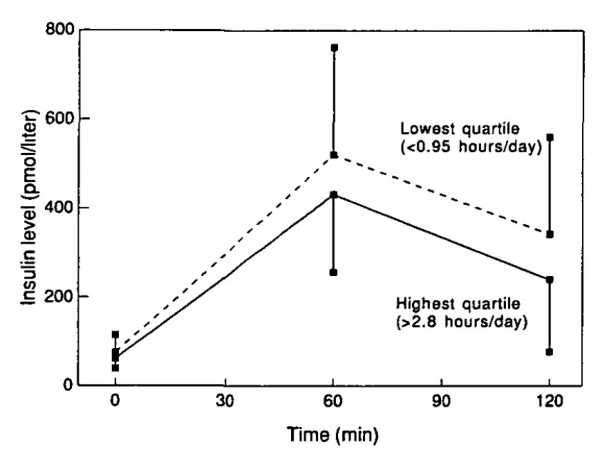In 1990 in the Zutphen Elderly Study habitual physical activity of leisure-time was assessed with a validated questionnaire. On average, the men spent 1.5 hours a day engaged in activities such as walking, bicycling, gardening and hobbies. In this cross-sectional survey, men in the highest quartile of weekly physical activity (>2.8 hours/day) had lower serum insulin levels compared with those who were less active. In another cross-sectional survey men engaging in physical activity, 30 min per day or more had a lower prevalence of glucose intolerance. Different types of physical activity, especially cycling and gardening but not walking, also had a lower prevalence of glucose intolerance. The Zutphen Study also showed that cigarette smoking was significantly and independently associated with 25-year incidence of diabetes.

Insulin levels (mean and standard deviation) during an oral glucose tolerance test in 389 men
aged 70-89 years, by quartiles of physical activity: The Zutphen Elderly Study, 1990.
Conclusion
Habitual leisure-time physical activity was inversely associated with serum insulin levels in a cross-sectional analysis. Thirty minutes per day or more of leisure time physical activity was related to a lower prevalence of glucose intolerance. Cigarette smoking was found to be a risk factor for diabetes.
